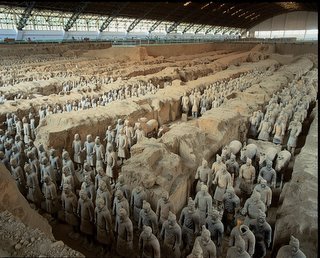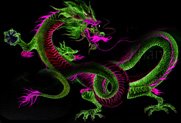Xian, Western Peace of Shaanxi Province, China
Terracotta Warriors and Horses
In the ancient time Xian was called Chang’an which means “Perpetual Peace”; it was the capital city of 13 Chinese Dynasties with in 3,100 years; Xian meaning “Western Peace” was one of the four major ancient civilization capitals. Xian is one of the birthplaces of the ancient civilization in the Yellow River Basin area of China.Xian Capital City of Shaanxi Province is located in the central part of China, in the southern part of the Guang Zhong Plain. Qinling Mountains span from the north to the South Xian and the Weihe River is in the south of the city. The location of Xian is favorable surrounded by water and hills.
The Best Travel Time to Xian
 Spring and autumn are ideal travel seasons in Xian, and the best time to travel are May, August, September, and October. A lot of indoor tourist attractions such as the Museum of Emperor Qin Shi Huang’s Terracotta Warriors and Horses, Stele Forest, Shaanxi History Museum and the Great Mosque also welcome tourists in summer and winter.
Spring and autumn are ideal travel seasons in Xian, and the best time to travel are May, August, September, and October. A lot of indoor tourist attractions such as the Museum of Emperor Qin Shi Huang’s Terracotta Warriors and Horses, Stele Forest, Shaanxi History Museum and the Great Mosque also welcome tourists in summer and winter.The Museum of Emperor Qin Shi Huang’s Terracotta Warriors and Horses
The Museum of Emperor Qin Shi Huang’s Terracotta Warriors and Horses and Mausoleum of Emperor Qin Shi Huang are the must see attractive places of Xian, These places are key historical monuments under the AAAA scenic areas. They have been included in the list of the World Cultural Heritages by the UNESCO.The Terracotta Warriors and Horses in Xian were excavated in 1974, and the museum was built at the site in 1979 and it has made the city famous and Xian is best known for the Chinese Terracotta Army.
The museum has 3 pits of Terracotta Warriors and Horses, forming a huge region. The 3 pits forms are in the form of a Chinese character with a total area of 22,780 square meters. More than 7,400 life-size warriors and horses, and over 130 chariots were excavated.
Pit 1 covers 14.260 sq. meters and contains more than 6,000 terracotta warriors and horses, arranged in orderly military formations. In front of the army, 3 rows of 70 warriors each make up the vanguard, which is followed by the main body of the army, 38 rows of troops.
There are also flank columns and rearguards. The array breathes the power of Emperor Qin Shi Huang’s army.
Pit 2 covers 6,000 sq. meters with the large military formation of chariots, cavalrymen, archers and foot soldiers and contains 4 independent units, with more than 1,300 terracotta warriors and horses, over 80 chariots and a large number of metal of metal weapons.Pit 3 is in the shape of "(ao)" covers 520 sq. meters and contains 68 pottery warriors, 4 horses and 1 chariot. Pit 3 forms an organic whole with the other 2 pits.
Chinese Terracotta Warriors and Horses
All the Terracotta Warriors and Horses are meticulously made, tall and strong. According to the legend, all of them were sculptured according the real imperial troops that protected the imperial palace of the Qin Dynasty.The Warriors are well modeled and proportioned, and each has different features and facial expression. Uniformly strong and firm in appearance, they vary in individual aspects according to age, experience and social status. Some are generals, some are officers and the others are soldiers.
The shortest is 1.78 meters, and the highest is 1.97 meters; and the lightest is 110 kilograms, and the heaviest is 300 kilograms. The heads and hands were modeled separately and then attached and painted, showing high workmanship.





























0 Comments:
Post a Comment
<< Home